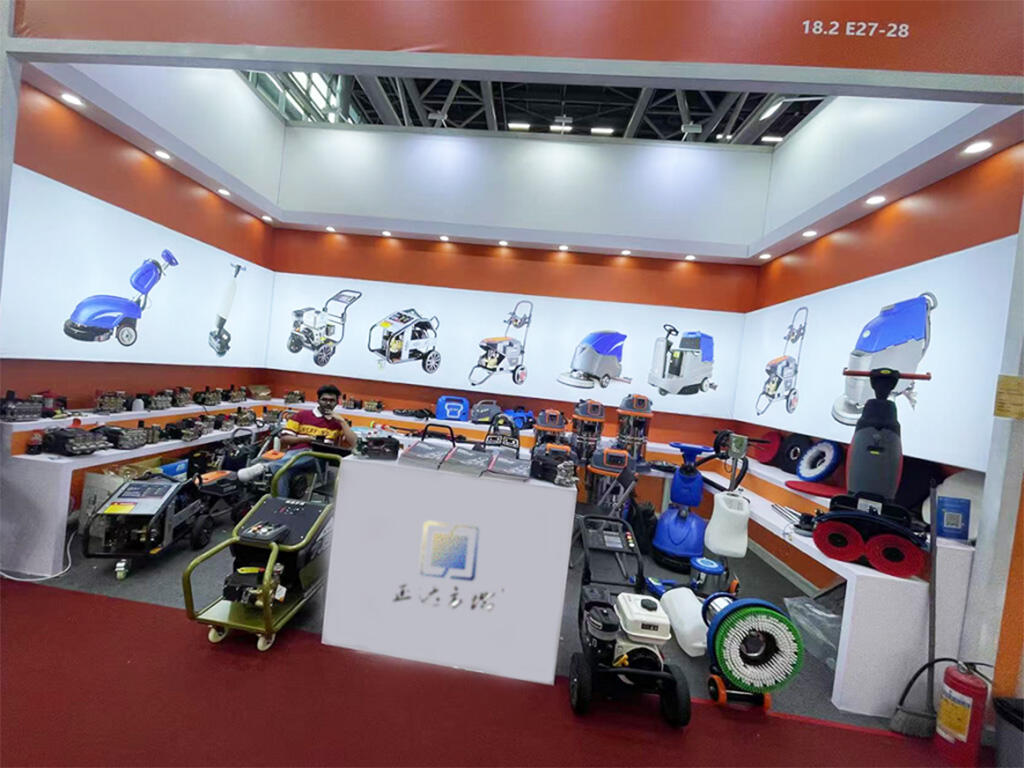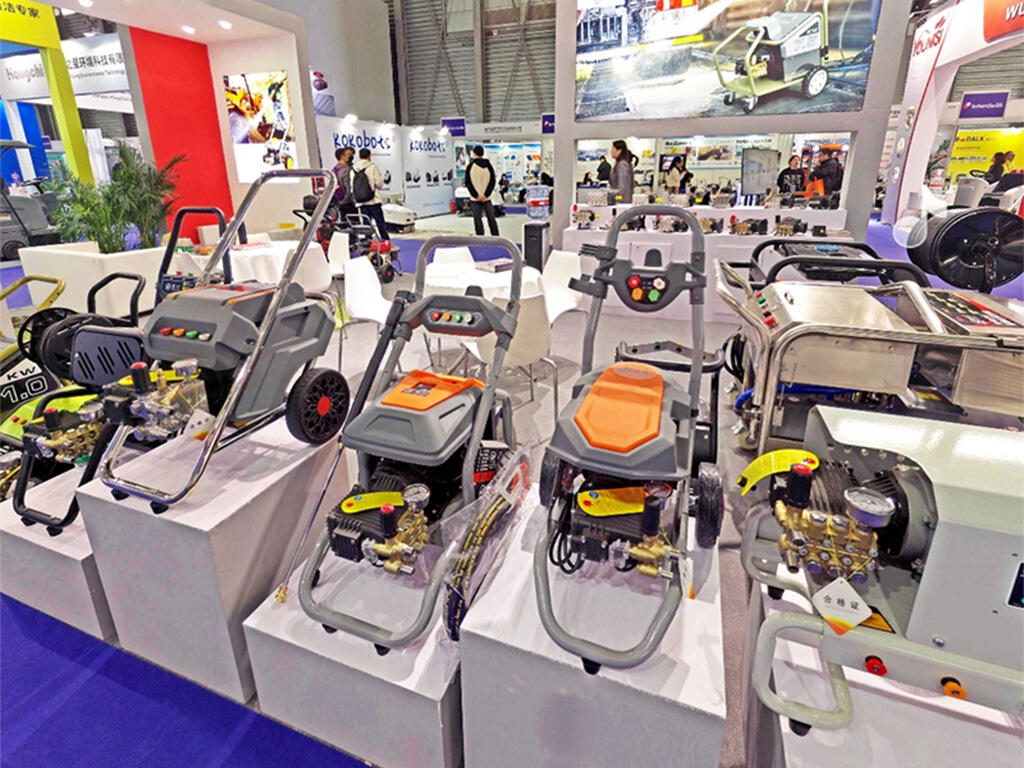Understanding Your Walk Behind Floor Scrubber: Key Components and Controls
Familiarize Yourself with the Controls of a Walk Behind Floor Scrubber
Walk behind floor scrubbers these days come with controls that make them pretty easy to operate once you get used to them. The main things people tend to adjust are how fast they go (usually somewhere between 1 and 3 miles per hour), how much cleaning solution gets applied, and how hard the brushes press against the floor. When shopping around, it helps to find machines where all the buttons and screens are clearly marked so operators know exactly which ones control when the water pump turns on or when the vacuum starts sucking up dirty water. Most good quality scrubbers have built in safety features that stop the machine from turning on accidentally, especially important in busy environments. Higher end models often come with handles that feel better in the hand and let workers steer more precisely without straining their back. Before starting any job though, it's always wise to check where the big red emergency stop button is located according to whatever diagrams came with the equipment.
Key Components: Solution Tank, Brushes, Squeegee, and Suction Motor
Four essential components work together in every walk behind floor scrubber:
- Solution Tank: Stores 15-30 gallons of detergent-water mixture, depending on model size
- Brushes/Pads: Rotary scrubbing heads (1,000-1,500 RPM) effectively remove embedded debris
- Squeegee: Rubber blades channel dirty water toward the vacuum system
- Suction Motor: Generates 50-80 CFM airflow to recover wastewater
When properly aligned, these components achieve up to 95% water recovery efficiency in commercial models, significantly reducing slip hazards compared to manual mopping.
Step-by-Step Operation: From Startup to Shutdown
- Pre-Start: Confirm solution tank fill level and ensure brushes are securely attached
- Engagement: Power on the machine, activate the brushes, then begin forward motion
- Operation: Use overlapping -œS- patterns at a steady 2 MPH for uniform cleaning
- Shutdown: Turn off solution flow first, followed by brushes, then the suction motor
- Post-Use: Empty the recovery tank immediately to prevent bacterial growth
Allow the squeegee to fully dry each pass (15-30 seconds) before overlapping. This minimizes residual moisture, a factor in 72% of floor-related slip incidents in industrial environments (OSHA 2023 data).
Preparing the Area and Machine for Optimal Cleaning Performance
Clearing the Space: Removing Mats and Obstacles
Remove tripping hazards and obstructions that could impede machine movement. Roll up floor mats, relocate furniture, and cordon off the cleaning zone to create a 360° workspace. This prevents brush entanglement and protects delicate surfaces from scratches caused by loose debris.
Pre-Sweeping Floors to Prevent Clogging and Improve Efficiency
Debris larger than 1/8 inch can damage internal components-”63% of suction motor failures are linked to particulate buildup. Use a microfiber dust mop to remove dust, sand, and gravel before operating the scrubber. This step reduces wastewater contamination and extends filter life by up to 40%.
Ensuring Surface Readiness Before Scrubbing
Inspect floors for hidden moisture, wax buildup, or chemical residues that may interfere with cleaning. Test a 3x3 ft area with your solution to confirm compatibility with the floor material. After allowing the test zone to dry, check for discoloration or texture changes that may require adjusting detergent concentration.
Choosing the Right Cleaning Solutions and Scrubbing Pads for Your Floor Type
Matching Detergent to Floor Material for Best Results
Getting the right detergent makes all the difference when it comes to keeping floors clean and lasting longer than expected. A recent study from the Facility Maintenance folks shows something interesting: around two thirds of floor finish problems actually come down to using cleaners with the wrong pH level. For those tough grease spots on concrete surfaces, go with an alkaline cleaner somewhere between pH 10 and 12. Sealed wooden floors work best with what's called neutral detergents, typically around pH 7 to 8 range. Acidic stuff like pH 3 to 5 should really only be used for stubborn mineral buildup on ceramic tiles though. And watch out for epoxy coated floors! These need gentle formulas without abrasives or ammonia otherwise they tend to get cloudy over time. Just a quick check of product labels can save lots of money and headaches later on.
Optimizing Detergent and Water Ratios for Maximum Cleaning Efficiency
Precise dilution improves cleaning performance by 34%. A 1:128 detergent-to-water ratio is ideal for daily cleaning of commercial vinyl flooring, while heavily soiled warehouse concrete may need a 1:64 concentration. Over-concentrated solutions leave sticky residues that attract 42% more dirt, based on industrial hygiene research.
Selecting the Correct Scrubbing Pad: Brush vs. Pad Based on Surface
| Surface Type | Recommended Tool | Aggressiveness Level |
|---|---|---|
| Polished Concrete | Polyester Pad | Medium (Red) |
| Textured Tile | Nylon Brush | High (Black) |
| Luxury Vinyl Plank | Crossweave Pad | Low (White) |
| Terrazzo | Hybrid Brush-Pad | Medium (Green) |
Brushes are ideal for porous surfaces like concrete and quarry tile, where bristles reach into grooves. Pads preserve the finish on smooth surfaces. Facilities using appropriate tools reduced recoating frequency by 57%, according to a 2022 Industrial Cleaning Study.
Avoiding Surface Damage with Proper Pad and Brush Selection
Check if the brush hardness matches what's needed for different floors using the Shore durometer scale. Those really stiff 60D nylon brushes can remove finish layers at about triple the speed compared to other options when working on waxed surfaces. When dealing with delicate materials such as linoleum or cork flooring, go for pads below 100 grit and keep oscillation speeds somewhere around 250 RPM max. The last thing anyone wants is damaging expensive floors. Before committing to any new combination of pads or brushes, it's wise to do a small test run somewhere nobody will notice just to be safe. Better safe than sorry after all.
Operating the Walk Behind Floor Scrubber: Settings, Techniques, and Best Practices
Adjusting Brush Pressure and Solution Flow for Different Floor Conditions
When working with different surfaces, it pays to tweak the machine settings accordingly. For tough floors like terrazzo, backing off the brush pressure by around 15 to maybe 20 percent helps those cleaning pads last longer without wearing out too quickly. Grease spots in places like commercial kitchens need more solution flowing through them, but watch out for going overboard since too much liquid just makes things worse for the squeegee and creates dangerous slippery conditions nobody wants. And remember what every good cleaner knows - always give any new setting combination a trial run on a tiny corner first. We've all seen what happens when someone skips this step and ends up redoing half the floor because they got the mix wrong right from the start.
Achieving Precision and Consistency While Operating the Machine
Use overlapping passes of 4-6 inches for complete coverage, especially in high-traffic zones. Maintain a steady walking speed of 1.5-2 mph to allow sufficient agitation time. For corners and edges, tilt the scrubber deck 10° and use side nozzles. Operators using consistent pressure and systematic pathing report 30% faster cleaning times.
Best Practices for Efficient and Effective Floor Scrubber Usage
- Perform a 90-second pre-operation check: inspect squeegee alignment, brush wear, and solution levels
- Clean recovery tanks immediately after use to prevent microbial growth and odors
- Rotate scrubbing pads weekly to ensure even wear
- Store the machine upright with brushes lifted to preserve pad integrity
Trained operators achieve 98% debris removal in commercial environments, per a 2023 janitorial efficiency study. Always power down before clearing jams or performing maintenance.
Maximizing Coverage and Safety: Cleaning Paths and Precautions
Using the Outside-In Method to Avoid Missed Spots
Begin cleaning along walls and edges, then work inward using concentric patterns. This prevents dirt from being pushed into corners and ensures full perimeter coverage. Focus on high-traffic entryways with tighter turns, maintaining a 12-inch buffer from baseboards to minimize solution splatter.
Following a Systematic Cleaning Path with Overlapping Passes
Use overlapping S-shaped passes across open areas, with each sweep covering 6-8 inches of the previous path. Maintain consistent speed to avoid uneven drying, and pause briefly before reversing to maximize solution absorption. In large spaces, divide floors into 10'x10' grids using temporary chalk markers for visual guidance.
Essential Safety Tips to Prevent Slip Hazards and Ensure Operator Safety
- Place "Wet Floor" signs at both ends of the cleaning area
- Wear slip-resistant footwear and high-visibility vests in active environments
- Inspect squeegee blades and tank seals before use to prevent leaks
- Follow lockout-tagout procedures when servicing internal components
Operators should complete OSHA-approved equipment training annually and use pre-operation checklists to verify emergency stop functionality. Allow 12-15 minutes of drying time under normal conditions before reopening the area to traffic.
FAQ Section
What is the average solution tank capacity for walk behind floor scrubbers?
Solution tanks in walk behind floor scrubbers can store between 15 and 30 gallons of a detergent-water mixture, depending on the model size.
Why is it important to pre-sweep the floors before using a scrubber?
Pre-sweeping removes larger debris that can damage internal components, optimizing efficiency and reducing suction motor failures linked to particulate buildup.
How do I choose the right detergent for my floor type?
Select detergents based on floor material and pH level needs. Alkaline cleaners are suitable for concrete, neutral detergents for wood, and acidic solutions for mineral buildup on tiles.
What precautions should be taken during operation to ensure safety?
Use wet floor signs, wear slip-resistant footwear, inspect squeegee blades, and follow lockout-tagout procedures for safe operation.
Table of Contents
- Understanding Your Walk Behind Floor Scrubber: Key Components and Controls
- Preparing the Area and Machine for Optimal Cleaning Performance
- Choosing the Right Cleaning Solutions and Scrubbing Pads for Your Floor Type
- Operating the Walk Behind Floor Scrubber: Settings, Techniques, and Best Practices
- Maximizing Coverage and Safety: Cleaning Paths and Precautions
- FAQ Section




